Happy Lesbian Visibility Week! This week, from April 22 to 28, is a time to intentionally celebrate and show solidarity with lesbians in our community. In honor of the occasion, we’re taking a look back at some important moments in lesbian representation on TV—from iconic characters to pivotal milestones.
Television, and media at large, both reproduce reality and create it. Representation has a tangible impact on how the public perceives queerness and how people understand themselves. Not all characters and representation are created equal, though, and an increase of both quantity and quality of lesbian characters is essential. According to GLAAD’s 2022-2023 Where We Are On TV Report (WWATV), there was a decrease in lesbian representation compared to the previous year’s study. Out of the 596 LGBTQ characters counted across all platforms, 180 (30%) were lesbians. There were also zero confirmed lesbian trans characters.
Queer representation in television is a powerful tool for moving the needle on LGBTQ acceptance and rights, and the stories must be fair, accurate, and diverse to accomplish any kind of real change. The impact of lesbian characters and inclusive plotlines cannot be understated—they have an incredible influence on informing and changing the minds of the public, while also granting sapphic people the life-saving opportunity to see themselves represented.
The history of lesbian TV representation has been a winding path, but it is an important avenue to walk down to understand how we arrived at today’s lesbian characters. While certainly not an all-encompassing list, this is a starting point to celebrate how far we have come and reflect on the work that still needs to be done. Even today, lesbian representation needs more stories from lesbians of color, trans lesbians, and disabled lesbians, to name a few.
All in the Family – “Cousin Liz” (1977)
On October 9, 1977, All in the Family season eight episode two aired, bringing to the screen one of the first ever explicitly queer television characters. The sitcom episode, titled “Cousin Liz,” found main characters Edith and Archie attending the funeral of Edith’s cousin Liz, where we meet her “roommate” Veronica. We find out Veronica and Liz were not merely roommates at all, but were in love and had a relationship “more like a marriage” than a friendship. While she did not actually say the words “gay” or “lesbian,” the implication is clear and after some initial comedic shock and confusion, Edith is sympathetic and accepting toward Veronica. “It must have been terrible loving somebody and not being able to talk about it,” she says. Edith also expresses surprise when Veronica says the two would have been fired from their teaching jobs if word had gotten out about their relationship—an issue that is frustratingly still prevalent today, nearly 50 years later. The series is inherently comedic, but notedly this episode’s humor is not at the expense of Veronica or lesbians in general.
Ellen – “The Puppy Episode” (1997)
Cut to 1997, Ellen DeGeneres made waves with both her personal coming out and her sitcom character’s coming out. In real life, DeGeneres publicly came out as a lesbian on The Oprah Winfrey Show, followed by the coming out of her character Ellen Morgan on the ABC sitcom Ellen. In an episode titled “The Puppy Episode,” Ellen struggles with her feelings and denial of her sexuality, particularly after meeting Susan, another queer woman. This internal struggle leads up to her coming out first to her therapist (recent GLAAD Vanguard Award winner Oprah Winfrey), and then later to everybody. After much stammering and discomfort, she tells Susan, “Why can’t I just… say the truth, I mean, be who I am. I’m 35 years old, I’m so afraid to tell people, I mean, I just… Susan, I’m gay.” While the coming out was not without negative public reactions and controversy (the series was canceled the next season), it was also one of the show’s highest rated episodes, and it marked Ellen as the first gay or lesbian lead character on a US network TV series. Also, according to a 2015 Variety poll, DeGeneres did more to influence Americans’ attitudes toward LGBTQ rights than any other celebrity or public figure.
Buffy the Vampire Slayer (1997-2003) – Tara Maclay and Willow Rosenberg
Airing 1997-2003, Buffy the Vampire Slayer introduced to television one of the first long-running lesbian relationships between characters Tara Maclay and Willow Rosenberg. They are not regulated to the plot’s sidelines or one episodic moment either. Instead, Tara and Willow are main characters in the series. Their relationship is also largely positive, as their love helps Tara become more confident and self-assured. Unfortunately, Tara’s sudden death in season six is often pointed to as a prime example of the “Bury Your Gays” trope, which sees queer characters unnecessarily and repeatedly killed off. It was a particularly emotional moment for queer audiences, as the beloved relationship was a chance for many sapphic people to finally feel seen through positive representation.
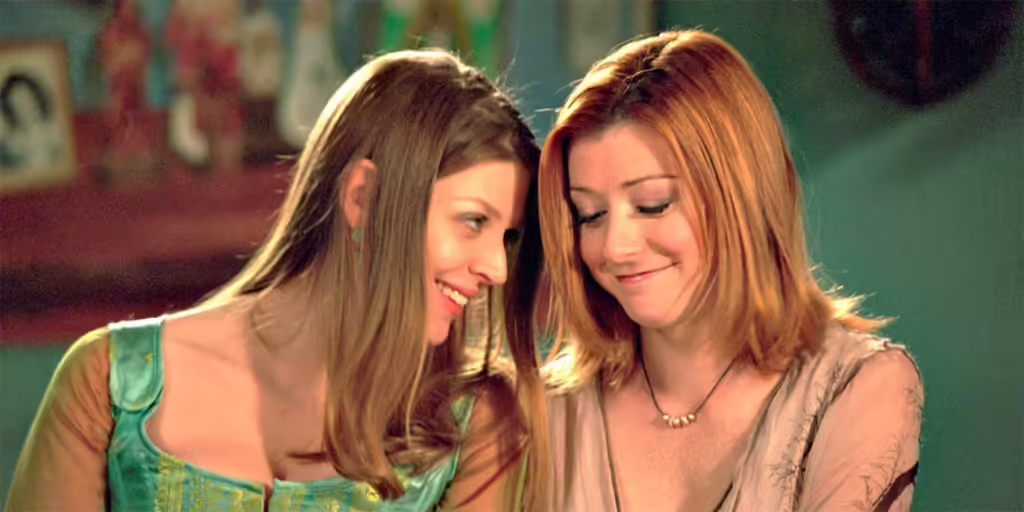
The L Word (2004-2009)
The early 2000s brought another iconic staple of lesbian pop culture: The L Word. The Showtime series did not just have a token queer person, but rather boasted an ensemble cast of queer characters. From 2004-2009, the series focused on their dramatic lives and relationships in Los Angeles. While The L Word was not perfect in its representation—particularly in its portrayal of trans and bisexual identities, as well as its lack of diversity—it was unlike anything else on TV, and became a beacon of lesbian representation in a sea of straight characters (with a sprinkling of gay men.) The series’ popularity encouraged community among lesbian viewers, as it was content actually made for queer women, and provided an excuse for gathering and discussion. Its iconic status created spin-offs including reality TV show The Real L Word (2010–2012) and The L Word: Generation Q (2019-2023), and it left a lasting legacy in the world of lesbian representation.
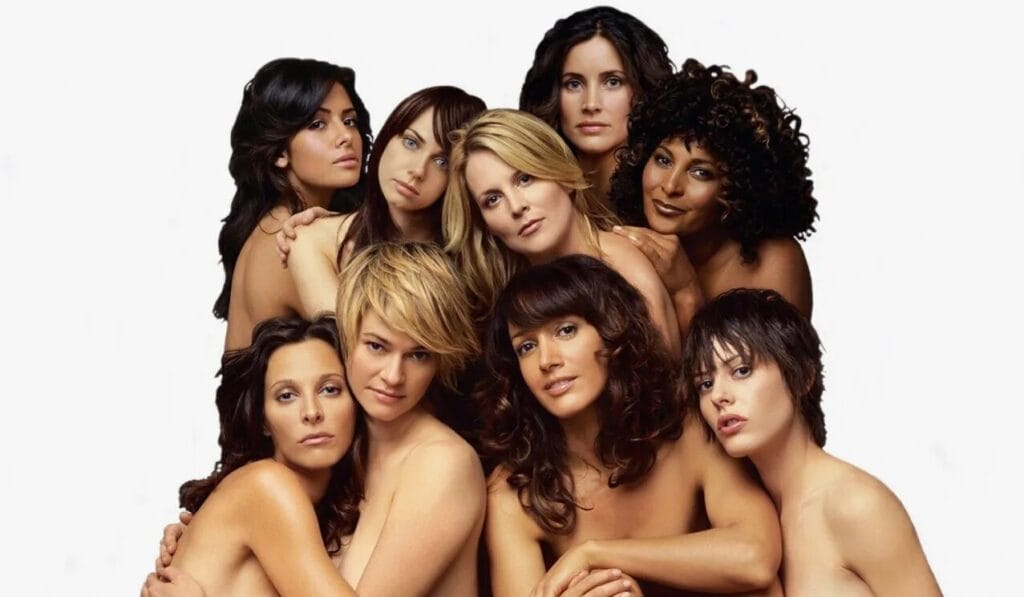
Grey’s Anatomy (2005-Present) – Arizona Robbins
Long-running medical drama Grey’s Anatomy has famously included a number of queer characters throughout its many seasons. In 2009, the series introduced lesbian pediatric surgeon Arizona Robbins (Jessica Capshaw) to season five, and she quickly became a fan favorite. Her sexuality was clear from the beginning of her character arc, as Arizona was already very out and proud. “I’m super gay. Like I’m the gayest of gays. I’m lesbianic,” she tells another doctor. Arizona was upgraded to a series regular in season six, and she has a long-term relationship with bisexual orthopedic surgeon Callie Torres (Sara Ramirez) spanning many seasons. Almost a decade later when Arizona was written off the series in 2018 she was the longest running lesbian character in network television history by a long shot at 228 episodes, and her relationship with Callie was the longest running same-sex couple in network TV. In the latest season of Grey’s Anatomy, the trailblazing lesbian character returned in a guest role; see her in season 20 episode four!
Glee (2009-2015) – Santana Lopez
A discussion of fictional lesbians of course must include Glee’s Santana Lopez. Airing 2009 to 2015, Glee was a musical-comedy that focused on the drama and struggles of the fictional William McKinley High School’s Glee Club. High school cheerleader Santana, portrayed by Naya Rivera, is a pivotal figure in lesbian TV representation. She had, and continues to have, a lasting and life-changing impact on young queer people. For many, Santana was the first time they truly saw themselves on screen, or perhaps saw who they could be. She goes on an incredible journey that sees her attempting to hide her sexuality, coming to terms with it, publicly coming out, dating her best friend, and ultimately becoming proud and confident in her queerness. Both her characterization as a Latine lesbian and her relationship with bisexual character Brittany are complex, transcending stereotypes in a way that was not often seen at the time.

The Fosters (2013-2018)
In 2013 The Fosters aired, depicting an important demographic: lesbian parents. The drama centered around the lives of the Adam-Foster family, as parents Stef and Lena raised their blended family of five children. It simultaneously tackled teen drama, the problems with the U.S. foster care system, and other social issues. Taking the familiar idea of a family drama, The Fosters was able to bring lesbian representation to the screen in a way that felt natural and real, and filled a major gap in queer representation. There had already been several instances of gay fathers depicted, but lesbian mothers were much more of a rarity. For Stef and Lena to be the matriarchs at the center of the series was significant.
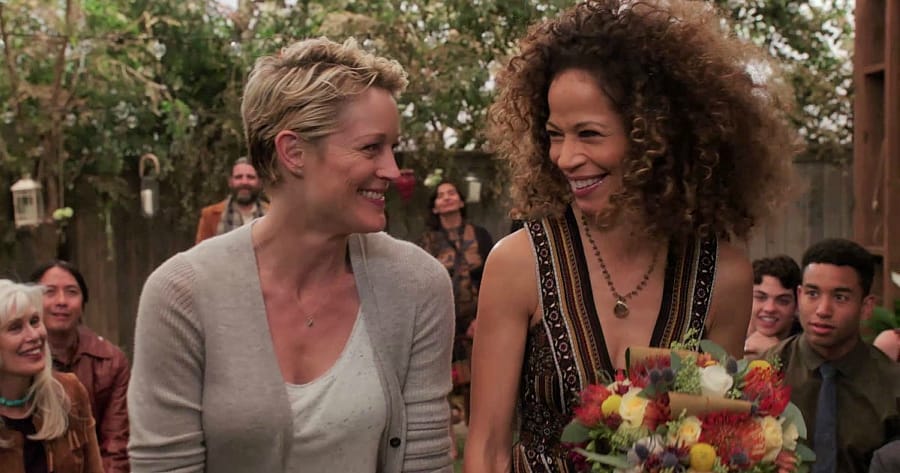
Orange Is the New Black (2013-2019)
Paving the way for an era of binge-watching, Netflix’s Orange Is the New Black was considered groundbreaking in many ways, including its diverse ensemble cast. The series saw Piper Chapman sent to prison for a year and a half, exposing her privileged existence to the life-altering effects of prison and the diverse experiences of the women there. Popular fictional lesbians on the series included Poussey Washington (out actress Samira Wiley), Nicky Nichols (Natasha Lyonne), Alex Vause (Laura Prepon), and Carrie “Big Boo” Black (out actress Lea DeLaria), and Suzanne Warren (Uzo Aduba). There were also several queer relationships throughout the series, such as between Piper and Alex, Nicky and bisexual character Lorna, and Poussey and pansexual character Soso. Orange Is the New Black covered a lot of ground in terms of queer plotlines, including Laverne Cox’s portrayal of trans woman Sophia Burset. However, many consider the murder of Poussey (one of the few Black lesbian characters on TV at the time) to be a modern example of “burying your gays,” a trope that we still have not been able to fully move past. Even still, Orange Is the New Black was very popular among queer fans, with some even crediting the series for helping them discover their own queerness.
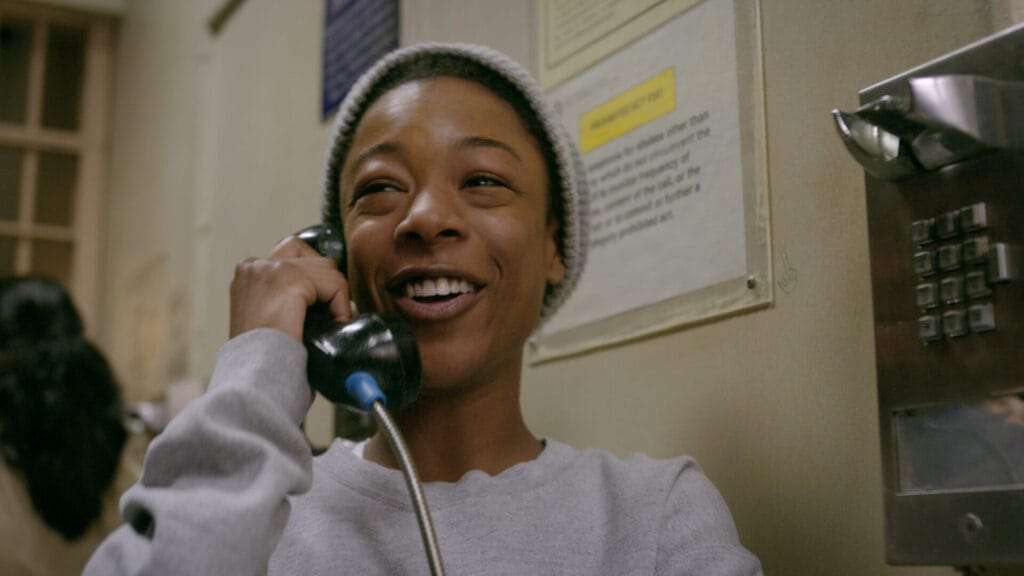
Sense8 (2015-2018)
Trans lesbians are severely underrepresented in television—no such characters were even found in GLAAD’s 2022-2023 WWATV report. However, sci-fi drama Sense8 notably included a trans lesbian main character: Nomi Marks, portrayed by trans actress Jamie Clayton. Sense8 follows eight strangers who discover they are linked through a psychic connection, and among these strangers is Nomi. In the series, she is allowed to be who she is, rather than her queer identity being her only characterization. Nomi’s arc does not center around transition, and she has a relationship with her girlfriend, and later wife, Amanita. In GLAAD’s 2015-2016 WWATV report, Nomi is described as having “the same type of dramatic storylines as other characters and is living her life beyond the ‘transition narrative’ we have seen so much of recently.” This representation remains important, and still lacking, today.
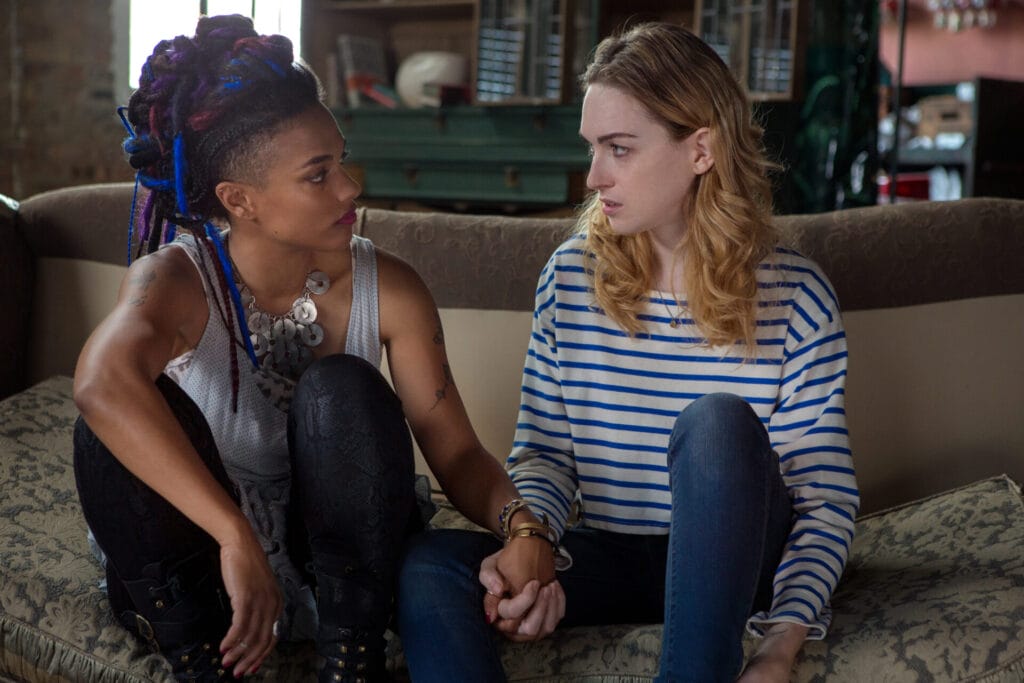
In the last ten years, more beloved lesbians have graced our screens, in series such as Supergirl (2015-2021), One Day at a Time (2017-2020), Batwoman (2019-2022), The Sex Lives of College Girls (2021-Present), and Heartstopper (2022-Present), to name only a handful of examples.
Progress has been made in lesbian representation and in how sapphic relationships are portrayed on television, but there is still significant room for necessary improvement. Yet as we continue to strive for more accurate and diverse representation, don’t forget to also use Lesbian Visibility Week as a moment to celebrate. You can find some more lesbian content to enjoy with last year’s blog post, and check out this year’s GLAAD Media Awards nominees for even more queer recommendations!













